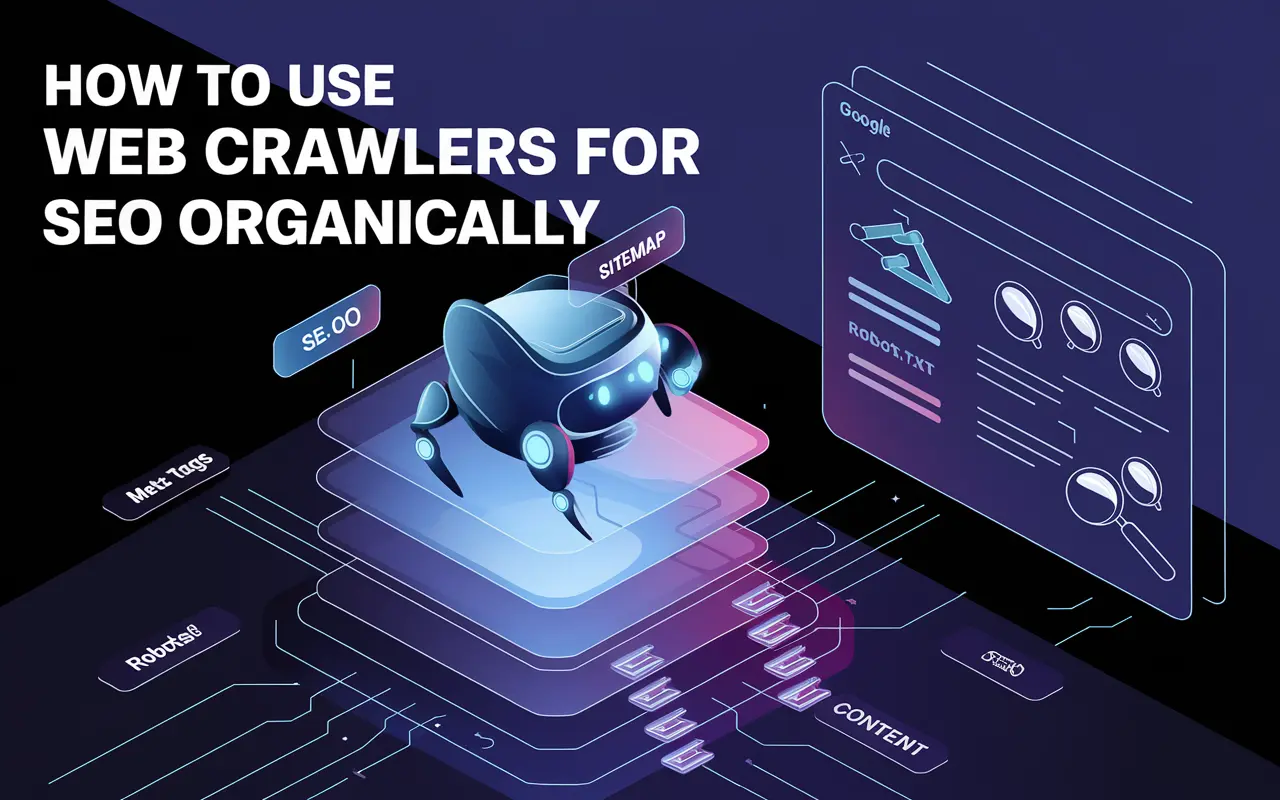Understanding Web Crawlers and Their Role in SEO
Web crawlers, also known as spiders or bots, are automated programs used by search engines like Google, Bing, and Yahoo to discover, analyze, and index web pages across the internet. In SEO, web crawlers serve as the digital scouts that analyze your website’s structure and content, enabling better visibility in search engine results pages (SERPs).
Effectively utilizing web crawlers for SEO helps identify website flaws, track changes, monitor competition, and ensure that your site architecture is crawlable and index-friendly. Tools like Screaming Frog, Sitebulb, and Google Search Console’s URL Inspection tool give businesses deep insights into how their website is interpreted by search engines. This improves the chances of higher rankings, richer snippets, and faster indexing.
Key Takeaway
Web crawlers are essential tools in SEO that simulate search engine behavior, identify site issues, and optimize web visibility, ultimately enhancing website performance and search rankings.
Why Web Crawlers Matter for SEO Performance
Web crawlers are critical players in SEO because they determine what pages get indexed and how search engines evaluate your site’s content structure and relevance. Without proper crawling, even the most beautifully designed websites can remain invisible in search results.
Supporting Technical SEO
Web crawlers help identify issues like broken links, redirect loops, and crawl errors that hinder search engine bots from accessing site content. Technical SEO depends on optimal crawlability.
Enhancing Site Architecture
They review how effectively a website is structured and whether important pages are internally linked, ensuring that search engines can navigate and rank them accordingly.
Monitoring Competitive Landscape
SEO professionals often use crawlers to analyze competitor sites for keyword targeting, backlinks, and content strategies.
Best Practices for Using Web Crawlers for SEO
- Use Crawl Budget Efficiently: Ensure your site only includes crawl-worthy URLs by minimizing parameterized URLs and duplicate content.
- Create and Submit XML Sitemaps: This helps search engine crawlers easily find important pages, especially for large and dynamic websites.
- Monitor Robots.txt and Meta Tags: Avoid accidentally blocking key pages from being crawled using Disallow rules in robots.txt or noindex meta tags.
- Perform Regular Crawl Audits: Use tools like Screaming Frog or Sitebulb every month to monitor crawl errors, page depth, and redirect chains.
- Improve Internal Linking: Ensure important pages receive sufficient internal links to signal relevance and make navigation seamless for crawlers.
How Web Crawlers Work in the SEO Process
Discovery Stage
Search engine bots start by accessing known URLs and the XML sitemap. Links found on these pages are then queued for crawling.
Evaluation and Parsing
As crawlers visit each page, they analyze HTML structure, metadata, content relevance, page speed, schema markup, and more.
Indexing
Once a page is crawled, it’s added to the search engine’s index if deemed valuable. Pages that aren’t crawlable or lack authority might be excluded.
| SEO Function | Role of Web Crawlers | Tool Example |
|---|---|---|
| Site Audit | Detect crawl issues, broken links | Screaming Frog SEO Spider |
| Content Analysis | Review word count, duplicate content | Sitebulb |
| Crawl Rate Monitoring | Check crawl frequency and depth | Google Search Console |
Real Impact: Web Crawlers in Action
Problem: Poor Indexing and Ranking for a SaaS Company
A B2B SaaS company experienced declining organic traffic despite producing high-quality content. Their blog had dozens of unpublished or orphaned pages not appearing in SERPs.
Solution: Deep Crawl Audit with Screaming Frog
SEO experts ran a comprehensive crawl using Screaming Frog. They fixed over 120 broken links, eliminated over 50 duplicate meta tags, and updated their sitemap and internal linking strategy for unindexed pages.
Results: 35% Increase in Indexed Pages and 50% More Organic Traffic
Within 60 days, indexed pages jumped by 35%, and the website saw a 50% rise in organic traffic. Key blog posts started ranking on Page 1 for high-volume keywords.
Common Mistakes to Avoid with Web Crawlers
- Oversized Pages: Pages with excessive code or unoptimized images may prevent crawlers from indexing content fully.
- Misconfigured Robots.txt: Accidentally blocking critical sections like /blog/ can stall visibility in search engines.
- Crawl Loops: Improper redirects can create infinite loops, consuming crawl budget pointlessly.
- Nofollow Internal Links: Using nofollow on internal links can weaken site structure and discourage deep crawling.
Related SEO Terms You Should Know
- Technical SEO: Techniques to optimize the infrastructure of a website for crawling and indexing.
- Robots.txt: A file that instructs web crawlers which pages to access or avoid.
- Sitemap: A file that lists all discoverable pages to aid crawler navigation.
- Site Audit: A full SEO performance review that includes crawl diagnostics.
FAQs About How to Use Web Crawlers for SEO
A web crawler is a bot used by search engines to scan websites and collect data for indexing and ranking web pages in SERPs.
You can use Google Search Console, server logs, or SEO audit tools like Screaming Frog to verify crawl activity on your site.
Tools like Screaming Frog, Sitebulb, SEMrush Site Audit, and Ahrefs Webmaster Tools simulate crawling to identify SEO issues.
It depends on the website’s update frequency, authority, and crawl budget. Popular sites can be crawled several times per day.
Conclusion: Maximize SEO Efficiency with Web Crawlers
Leveraging web crawlers is essential for a scalable, strategic SEO campaign. From identifying on-site issues to optimizing site structure for higher rankings, crawlers provide the technical insight required for sustainable SEO results. Businesses that embrace crawling tools see faster indexing, improve ROI from content efforts, and stay ahead of technical pitfalls.
Integrate regular crawl audits and sitemap optimization into your SEO routine and explore more actionable tips on our SEO services page.






